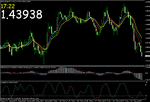munchiedude
Well-known member
- Messages
- 320
- Likes
- 10
hi,
ive been trading live for very small profits and i believe my risk and trade management are ok. however, i always encounter a stumbling block that i was wondering if anyone has any thoughts on?
situation: you find yourself in a winning trade, the forex pair then sharply moves in your direction. when do you take profits? what do you use to indicator a reversal from a sharp move your way?
i would normally use a cancel and replace stop management for normal trending markets, but when i trade trendline breaks, and the move is sharp, i never know where to cancel and replace to lock in profits since it hasnt retraced to any sup/res level.
i hope that it is clear, just wanted to know what people generally do in this scenario to maximise profits as often i have found myself seeing the sharp move retrace sharply back and eventually my winnings go "puff".
any thoughts appreciated.
ive been trading live for very small profits and i believe my risk and trade management are ok. however, i always encounter a stumbling block that i was wondering if anyone has any thoughts on?
situation: you find yourself in a winning trade, the forex pair then sharply moves in your direction. when do you take profits? what do you use to indicator a reversal from a sharp move your way?
i would normally use a cancel and replace stop management for normal trending markets, but when i trade trendline breaks, and the move is sharp, i never know where to cancel and replace to lock in profits since it hasnt retraced to any sup/res level.
i hope that it is clear, just wanted to know what people generally do in this scenario to maximise profits as often i have found myself seeing the sharp move retrace sharply back and eventually my winnings go "puff".
any thoughts appreciated.

